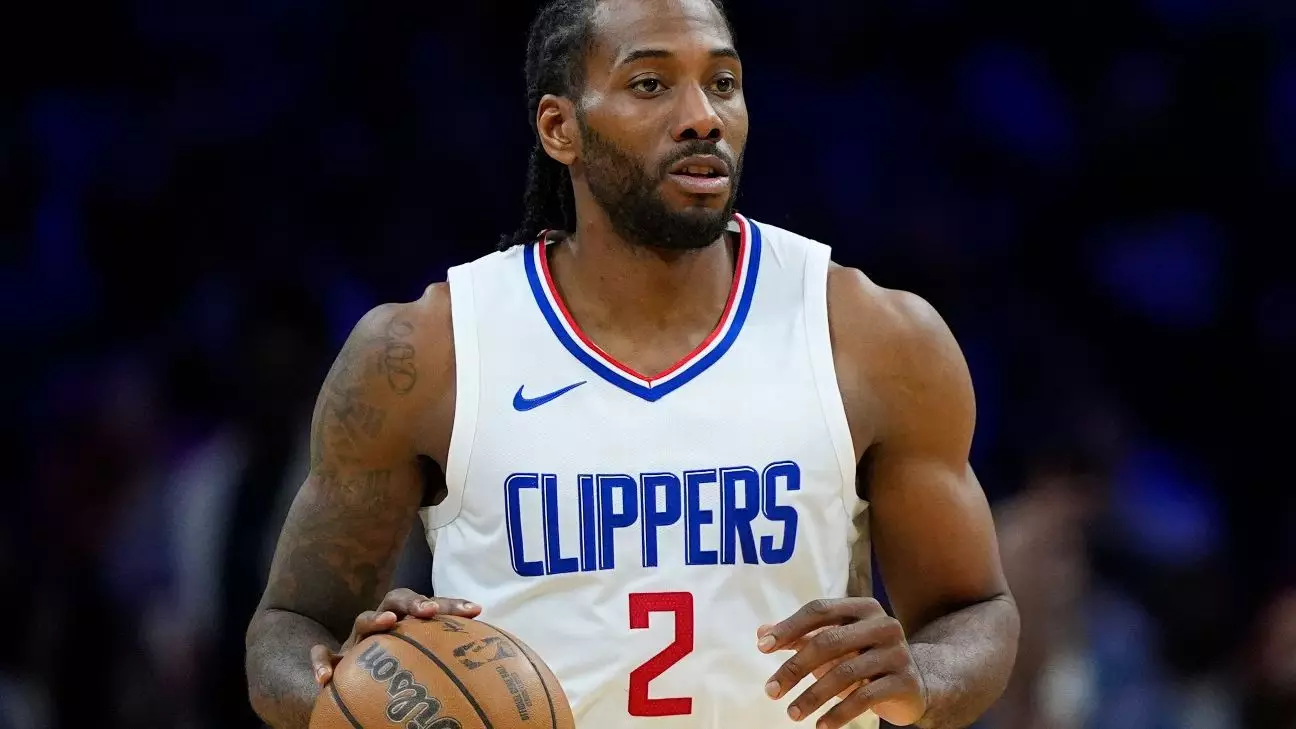In the realm of professional basketball, injuries can be game-changers—not only for individual players but for entire franchises. Kawhi Leonard’s ongoing battle with right knee inflammation has raised significant concerns for the LA Clippers as they prepare for the upcoming season. The Clippers’ president, Lawrence Frank, recently provided insights into Leonard’s condition, revealing a mix of cautious optimism and somber uncertainty. The team is prioritizing Leonard’s long-term health over immediate availability, which reflects a strategic shift in how they manage his injury.
Frank reported that the swelling in Leonard’s knee had substantially decreased, yet the organization remains guarded regarding his return to full training activities. This measured response highlights the organization’s understanding that the timeline for rehabilitation is fluid and heavily reliant on Leonard’s progress. Frank stated, “I think that the timing’s all going to basically depend on how his knee responds to each phase,” emphasizing a realistic approach that avoids creating false hopes among fans and teammates.
Head coach Ty Lue echoed this sentiment, noting that there is no established plan for Leonard’s reintroduction into training drills. The Clippers’ reliance on their medical staff indicates a collaborative approach to managing Leonard’s health, reflecting a broader trend within professional sports to adopt more conservative training methods for injured players. For Leonard, who has a history of knee troubles, this cautious strategy is vital.
The Clippers’ front office appears reflective about previous decisions that may have influenced Leonard’s recovery trajectory. Frank revealed past experiences that serve as cautionary tales for the franchise. “We learned some lessons,” he stated, recalling Leonard’s eagerness to return during the playoffs against the Dallas Mavericks last season—a decision that turned out to be premature. This past experience underscores the need for lengthy rehabilitation before fully reintegrating Leonard into gameplay.
The idea of “getting him 100 percent” resonates throughout Frank’s statements and reinforces the perception that Leonard’s future with the team may depend on a more meticulous recovery process. The Clippers want a healthy Leonard not just for one season, but for many seasons to come. This long-term vision is critical in a league where player longevity is increasingly linked to managing injuries effectively.
The implications of Leonard’s injury situation extend beyond his individual health—it affects the entire team dynamic. Leonard’s absence from training camp will necessitate adjustments from his teammates and coaching staff, particularly as they strive to prepare for the rigors of a competitive NBA season. The Clippers must find ways to adapt their strategies and foster the growth of younger players in Leonard’s absence.
Additionally, the competition within the Western Conference remains fierce, making the need for key players like Leonard even more essential. The uncertainty surrounding his availability can potentially impact the psychological state of the team, introducing both pressure and motivational challenges as they work to gel without one of their star players.
As Leonard continues to handle his recovery, fans and analysts alike will be watching closely. While the Clippers remain cautiously optimistic about the healing process, they are fully aware that a long-term healthy Leonard is far more valuable than a rushed comeback. This period of incubation presents both a challenge and an opportunity for the franchise to reconsider their management practices regarding athletes with chronic injuries.
The road to recovery can be a winding path filled with uncertainty, but it is a journey that must be taken with care and determination. As the Clippers approach the season, their commitment to Leonard’s long-term health shines through—a strategy that may ultimately pave the way for sustained success in the high-stakes environment of professional basketball.


Leave a Reply